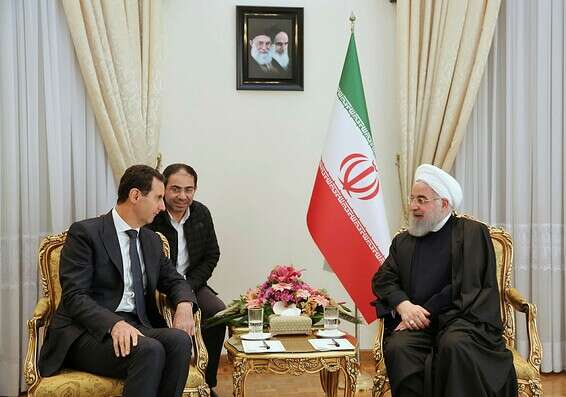The Syrian president can sum up with satisfaction ten years to the civil war, at the end of which he is still in power • The price - the introduction of Iranian cancer into the heart of Syria - is paid by the entire region
Syrian President Bashar Assad in 2019
Photo:
IPI.
This week, just ten years after the outbreak of the Arab Spring in Syria, Bashar Assad and his wife Asma in Corona contracted active symptoms.
The doctors claim that the presidential couple's chances of recovery are good, even if they have not yet had time to get vaccinated with the Russian "Sputnik", which Israel funded for them in exchange for the return of the young woman who crossed the border.
Regional statistics also give the Syrian ruler high survival rates.
After all, Assad is almost the only Arab leader to emerge unscathed from the storm that toppled veteran dictators like Mubarak and Gaddafi, the son of Tunisian Ali and Yemeni Ali Abdullah.
But this survival has taken a terrible toll on the people of Syria.
Hundreds of thousands were killed, more than 10 million displaced.
At least half of them became refugees abroad.
Assad himself, who ruthlessly massacred his citizens, was forced to survive in the palace, exposing himself to the Iranian "mutation," which is several times more contagious and dangerous than the corona.
The events began, as I recall, ten years ago.
Inspired by developments in Tunisia and Egypt, in March 2011 groups of citizens, without a defined identity and unified leadership, took to the streets of cities in Syria, demanding the overthrow of the regime and the granting of excessive freedom and rights to the individual.
These demonstrations were violently suppressed by the regime.
Tehran's grip on Syria
But by the end of two or three years, Sunni rebel groups, more moderate and less moderate, had taken over the protest movement, and with the support of outsiders, who recognized an opportunity to oust Assad from the Alawite community, who make up only 12 percent of Syria.
Iran, on the other hand, when it saw the danger of an ally falling in Damascus and the collapse of the land bridge connecting it through Iraq and Syria to Hezbollah in Lebanon, ordered thousands of Hezbollah fighters to come in to help Assad.
The local demonstrations turned into a bloody civil war.
ISIS - the most extremist and murderous Islamic State organization among rebel groups - has managed to take control of large parts of Syria's territory.
In front of him, they felt the help of the Syrian army, Hezbollah operatives and the Iranian Revolutionary Guards.
Syria has become a multi-participant battlefield, joined by local elements such as the Kurds and outsiders like Erdogan’s Turkey, or Saudi Arabia that has flowed money to the rebels.
In 2015, when Putin recognized a marked reluctance on the part of the West to intervene in what was happening in Syria and a lukewarm Obama response to Assad's use of chemical weapons against his people, he stuck a stake in Syria and built a strategic outpost there for many years.
The entry of the Russian Air Force and Russian special forces into Syria alongside Iran, Hezbollah and pro-Iranian militias turned the bowl upside down.
The Islamic State was defeated, and the Iranians began to fill the void created in Syria by taking over various areas of activity and presence on the ground.
Ironically, it was the mobilization of the Western Coalition to defeat the Islamic State that helped the Iranian regime deepen its grip on Syria.
Since the beginning of the events in Syria ten years ago, Israel has decided not to intervene in the civil war, except in cases where its security will be threatened - for example, the establishment of a hostile area on the border in the Golan Heights.
In this spirit, in the first years of the Arab Spring in Syria, various forms of support and assistance were formed for the moderate rebels, who took over the border area.
A combination of interests
Despite the Israeli attacks in Syria, Iran continues to deepen its grip on Syria and shows no intention of withdrawing from there.
Hezbollah operatives have infiltrated all avenues of the Syrian army.
Weapons continue to flow from Hezbollah's Syrian army depots in exchange for Iran's oil shipments to Syria, which Israel, according to reports, is also working to prevent on the sea route.
Eliminating the Iranian presence in Syria, severing ties between Tehran and Damascus, currently seems like a very difficult task, perhaps impossible, especially when it comes to military means alone.
But it should be remembered that the Russians are not enthusiastic, to say the least, about the Iranian presence, nor is the Syrian regime, which owes its survival to Tehran, happy to become Khamenei's hostage.
Syria, which has not yet recovered from the civil war, needs billions in rehabilitation, and only the West's willingness to help it in exchange for the removal of the Iranians, along with the continuation of international sanctions imposed on Iran, may recover Assad from the more dangerous mutation that has clung to him.

